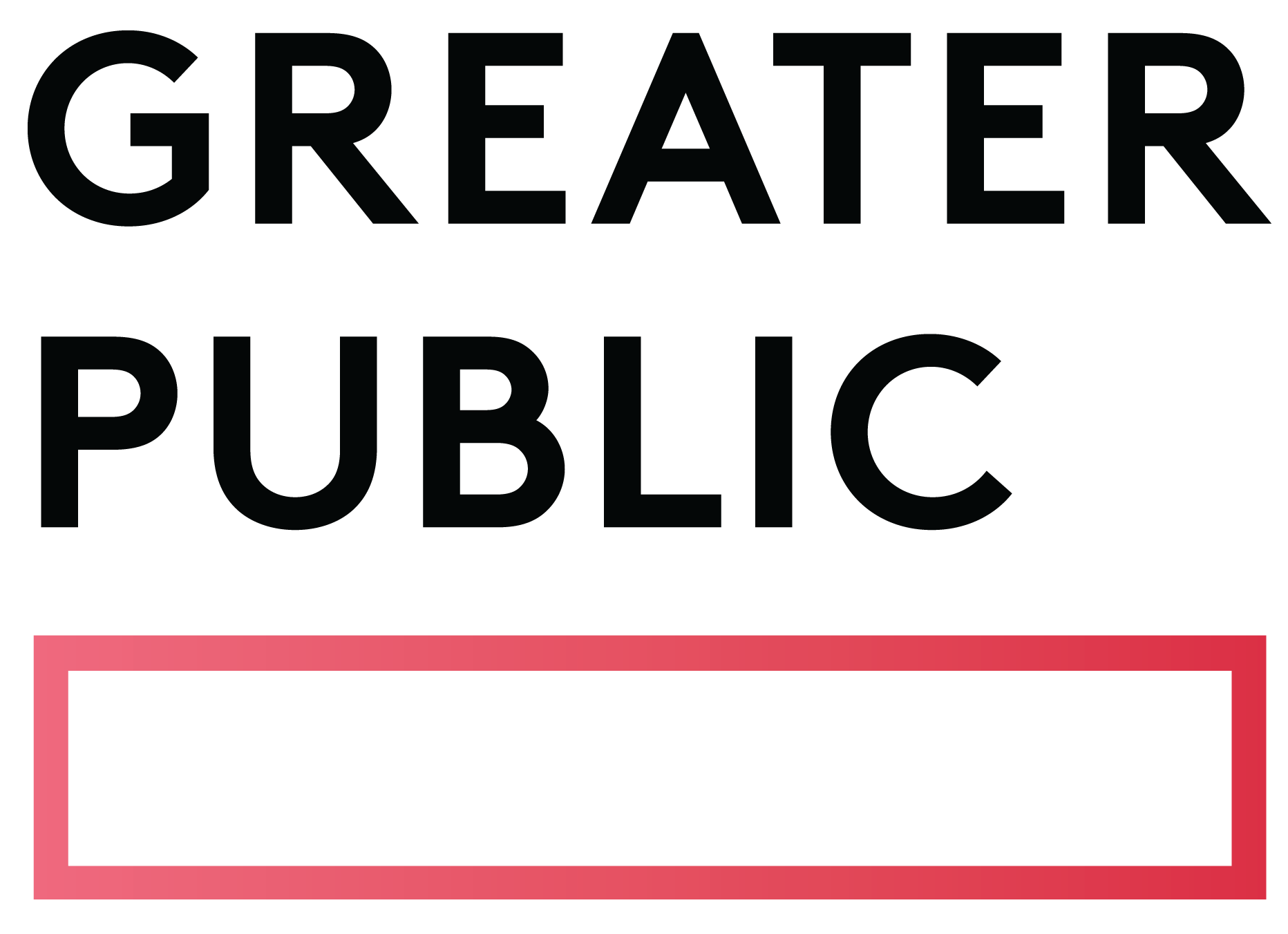Related Articles
Subscribe to the Greater Public newsletter to stay updated.
This site is protected by reCAPTCHA and the Google Privacy Policy and Terms of Service apply.

During the past couple of years, public media as an industry has been going through another round of reckoning with our lack of audience diversity and struggles to create the kind of internal work culture based in equity and inclusion that would more easily retain and develop diverse staff. This is far from the first racial reckoning that public media has undergone, and recently more has been published examining what public media failed to do at key points in its evolution. Of particular note is the deep dive that the Viewers Like Us podcast has done on public television, Laura Garbes’ research into the 1977 CPB task force on minorities in public broadcasting as well as NPR’s response in 1980, and Christopher Chávez’s research into the history of Latinos being overlooked in public media.
It’s helpful to understand what didn’t happen that led us to the current state of public media hyper-serving educated, higher income, and predominantly white audiences. It’s also helpful to look at what did happen. Where did public media invest time, energy, and money over the past several decades? What were the predominant strategies and how did they develop? With that perspective, it’s worth looking at the Audience 88 initiative.
In the 1980s during the Regan administration, CPB funding began to face cuts. At the time, NPR and many public radio stations were still very reliant on CPB funding. While public radio audiences had grown after the founding of CPB and NPR, by the ‘80s audience growth had come to a standstill at around 11 million weekly listeners, and the number of donors was flattening as well. In 1988 a new Telecommunications Act was passed that went even further than the 1967 act to address the needs of underserved communities. It required CPB to report to Congress on the “needs of minority and diverse audiences, including racial and ethnic minorities, new immigrants, persons for whom English is a second language, and illiterate individuals,” create plans to address those needs, and offer “projections of minority employment by the broadcasting entities.” So, at the same time Congress was recognizing that public media need to do a better job of serving diverse audiences and employing people of color, resources to do this work had become stagnant.
In this challenging landscape, David Giovannoni, who the New York Times later called “A brilliant analyst of public radio’s audience…quite possibly the most influential figure in shaping the sound of National Public Radio today,” joined with Tom Thomas and Terry Clifford, who had founded the National Federation of Community Broadcasters (NFCB) and the Station Resource Group (SRG), to secure CPB funding for an audience research study titled Audience 88*.
Audience 88 asserts that commercial stations distinguish themselves in a competitive landscape by “identifying audience segments that other stations do not serve” or “producing programming that is more appealing to a segment of the audience.” Drawing from these commercial practices, the study used new data from NPR and Arbitron to conduct a new level of audience analysis. The goal was to identify public radio’s core audience in hopes of catalyzing growth. Over the course of a year, Audience 88 released five key reports, as well as a newsletter, follow-up papers and workshops.
Reflecting on the project in 2022, Tom Thomas points out that it was controversial at the time to use CPB funding to apply commercial audience tactics to public radio. He also asserts that Audience 88 did not intend to advocate for a specific strategy, but rather attempted to challenge the practice of programming from gut instinct and bias, instead creating a fact-based narrative about the service and audiences to better inform decisions. He says that by being humble and patient, a data-informed strategy won out.
One of the findings of Audience 88 was that public radio listeners were more likely to be highly educated, earn a higher income, and more likely to be white. Reports from the initiative make the case that this was because so many public radio stations were owned by colleges and universities, and that key decision-makers were also more likely to be highly educated. However, the reports were quick to point out that this was not necessarily a bad thing. From Audience 88: The Picture Emerges:
“Many observers would find in public radio’s audience much about which to rejoice. Public radio is embraced by many of our society’s most informed and active citizens, people who shape the political, economic, and intellectual life of our society. Public radio’s listeners are the same people who use and nurture the institutions that preserve and advance our society, from the literary press to the theatre, from museums to volunteer social services. That public radio is part of their lives, too, is testimony to its role in society.”
While Audience 88 may not have explicitly advocated for a specific strategy outside of using audience data to gauge the effects of programming decisions, it’s easy to understand how an industry faced with federal funding cuts and stagnant audience growth would be inclined to double down on what was working, particularly when what they were already doing well was attracting such an affluent and powerful audience. Stations that were willing to try this strategy were able to grow audience and membership revenue, which in turn inspired other stations to try the Audience 88 approach.
Concepts that have become the gospel of public radio programmers stem from Audience 88, including using Neilsen data to define ‘fringe’ versus ‘core’ listeners, developing single-format stations to cultivate habitual listening, and the idea that ‘programming leads to audience, which then leads to revenue’. The initiative also led to the creation of The Public Radio Expansion Task Force in 1989, which included senior leaders from CPB, NTIA, NPR, APM, and NFCB, that set the direction for public radio’s strategy in the 1990s, particularly the rise of single format stations. To this day, when a station buys a new frequency to launch a new format rather than attempting to incorporate new types of programming into this existing broadcast, that is the Audience 88 strategy in action more than 30 years later.
Additionally, Audience 88 attempted to create psychographic profiles for core public radio listeners and went on to assign values to these traits. From Audience 88: Framing Audience:
“While public radio may differ in its intent, it too has a core audience brought to it by the attitude inherent in its programming. Public radio has maintained a distinct attitude about itself and its listeners for decades: being ‘intelligent’ is an attitude; being of the ‘highest quality’ is an attitude; ‘reflecting the highest achievements of our culture’ is an attitude; making lofty ideas and ideals accessible to all interested Americans is also an attitude.”
When recently asked for comment about this audience description, President & Executive Director of the Public Radio Programming Directors Association (PRPD) Abby Goldstein remarked, ”These same descriptors could be used to describe an elite private school.”
She contrasts the notion of “distinct attitude” with a mandate of public service. “Public radio chose this audience,” Goldstein points out. “If the target audience was different, then the programming would sound different.” She also flags that part of the working premise of Audience 88 was to figure out how public radio could better serve its own needs. She asks if that should really be part of the goal and suggests that, while unintentional, it “smacks of white supremacy culture.”
Audience 88 did propose two solutions to improve diversity in public radio. It recommended hiring more people of color into existing public radio stations and creating and supporting ‘minority-owned’ stations. When asked if minority-owned stations were an example of ‘separate but equal’ for this article, Thomas said that they were not, because “ownership is power.”
However, no people of color were part of the team that conducted Audience 88 or made the recommendations for solutions to improve diversity in public media. After reviewing the Audience 88 materials, Maxie Jackson, Chief Content Officer at New England Public Media, said that minority-ownership is key, but only if there’s a supportive ecosystem with a national network for content development and distribution. Something like that has not yet been created. He says that diversifying the staff of stations matters, but only if those staff “are included in editorial and decision-making positions.” Otherwise when new staff of color are hired, they will be left without agency or support to navigate the culture and structure of public media organizations. As an example, he quotes Martin Luther King Jr., “I’ve come to believe we’re integrating into a burning house.”
Jackson also points out that the result of Audience 88 has proven to be “a strategy to super-serve a core audience that is overwhelmingly white, as opposed to creating services for emerging and underserved demographics. The investment in this approach of audience development is fundamentally at odds with the basic diversity recommendations of Audience 88” and undermines any other more meaningful solutions that people of color have made over many decades.
That is why more than 30 years after the publication of Audience 88, public radio’s audiences remain overwhelmingly higher educated, higher income and white, despite a total weekly cume that has tripled over that same period to reach more than 30 million.
While Audience 88 is clearly a product of its time, and we cannot rewrite the past, there’s much to learn from how this initiative shaped public radio. We can recognize that our current state of hyper-serving a homogeneous core audience is not a fixed state or an accident, but the culmination of many decisions that were made, and actions taken. Then, excitingly, if the current state is something we constructed, that means we have the power to build something even better.
Goldstein suggests that it may be time to bring in a qualitative approach to augment our audience research. She points out that we are only experts at cultivating the audiences we’ve had and not future audiences. This means we need to step back from being experts with a dominating spirit and step into a place of openness and curiosity: “What does service look like to them, not to you?” Goldstein is promoting evolving the adage of ‘programming leads to audience, which then leads to revenue’ to a new audience-first strategy of ‘audience drives programming, which then leads to engagement and support.’
Jackson suggests that “CPB as the major funder of our system might consider funding projects that adapt the commercial media playbook of creating complimentary niche networks targeting the diversity within the various BIPOC communities.” He points out that our society is more fractured than ever and will remain so for some time. Meanwhile, old broadcast models that were created to serve white people are not sustainable. He proposes that new digital ecosystems could serve a new, more diverse generation of audiences by looking for nexuses where the values and interests of different, diverse communities intersect. As part of his Maynard 200 National Journalism Fellowship, Jackson developed the Emergence Project, which advocates for a Digital, Multimedia, Pan-African public media service emphasizing content, community engagement, affinity marketing, and Black philanthropy. He cites The Takeaway as an example of this community-centered approach to content development. While public media has decades of research about the values of its highly educated, wealthy, white audience, for Jackson the opportunity lies in learning what non-traditional audiences value.
However, before we could engage new audiences enough to even conduct such research, we would need to lay down a foundation of trust, particularly with communities of color. This would mean taking accountability for how we built the current state, and truly apologizing for decades of neglect, underservice, and occasionally outright harm, intentional and unintentional. Several public media organizations and commercial news outlets have demonstrated what this radical, wholehearted and deeply human process can look like, notably “An examination of The Times’ failures on race, our apology and a path forward.” While such a humbling acknowledgement can be scary, it is exactly the kind of courageous vulnerability public media needs to demonstrate in order to repair our relationship with the communities we’ve intentionally underserved for decades. To move forward, we must do better.
The constraints that led to the Audience 88 initiative, like the limited number of broadcast signals in any given market, are gone. There are new digital tools for audience analysis, better data, and a deeper understanding of how to ensure such research is done in a way that promotes diversity, equity and inclusion. The future is wide open. Public media once again seems on the brink of audience stagnation and even donor decline. What would it look like to do an Audience 23 initiative next year? How could we evolve this approach to set the next 30 years of audience development in public media on a sustainable path that truly meets our mission and serves everyone?
Public media is finally at the crux of trends that have been advancing on our industry for some time and have reached a tipping point sooner than predicted due to the pandemic. Digital adoption, particularly video streaming, has increased at record rates. The gap between the richest and poorest in our country has widened further, causing philanthropic giving to polarize between major gifts and mutual aid microdonations. We need comprehensive audience research to inform a critical vault forward to a new state of audience engagement, service and support in order for public media to survive and even thrive for decades to come.
This site is protected by reCAPTCHA and the Google Privacy Policy and Terms of Service apply.
New to Greater Public? Create an account.


